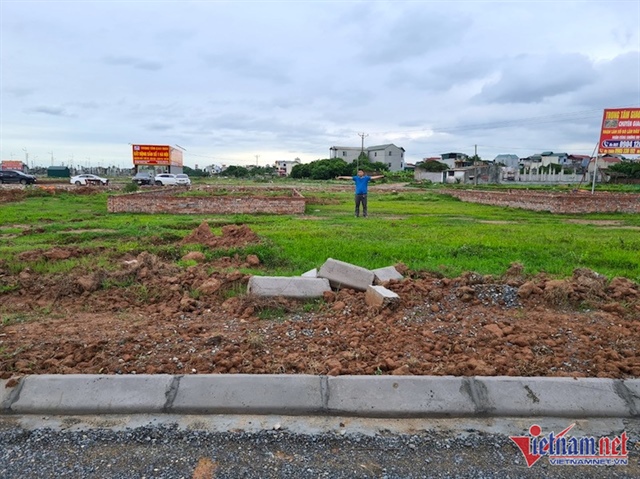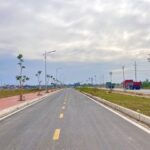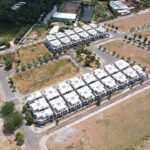Regarding land compensation regulations, citizens are curious about Decree No. 88/2024/ND-CP, specifically whether it applies to households and individuals who own residential houses and life-serving constructions in regions with difficult socio-economic conditions.
In response, the Ministry of Natural Resources and Environment clarifies that Decree 88 of 2024 stipulates land compensation for households and individuals who own residential houses and life-serving constructions. This applies to those who have been using residential land in regions with difficult or particularly difficult socio-economic conditions before July 1st, 2014, without land-use right certificates (red books). The decree outlines specific regulations according to different time periods.
1. For households and individuals who have been using land with residential houses and life-serving constructions before December 18th, 1980, and do not have land-use right certificates, if they meet the compensation eligibility criteria as per Clause 1, Article 5 of this Decree, the land compensation will be as follows:
a) In cases where the entire or partial land lot with residential houses and life-serving constructions is reclaimed, and the reclaimed area is equal to or larger than the recognized land limit as per Clause 5, Article 141 of the Land Law, compensation will be provided for the recognized land limit.
For the area of land on which residential houses and life-serving constructions have been built, exceeding the recognized land area as per Clause 5, Article 141 of the Land Law, land compensation will be provided according to the actual area of construction. This is after deducting the land use fee that would have been paid when receiving the red book for the portion exceeding the limit at the time of approval of the compensation, support, and resettlement plan.
b) In cases where the entire or partial land lot with residential houses and life-serving constructions is reclaimed, and the area of the land lot is smaller than the recognized land limit as per Clause 5, Article 141 of the Land Law, land compensation for residential purposes will be provided for the entire reclaimed area;
c) In cases where the area of land used for production, business, non-agricultural, commercial, or service purposes is reclaimed, compensation will be provided according to the actual reclaimed area. The type of land for compensation calculation will be applied as if it were state-allocated land with a land use fee, with a stable long-term land use duration;
d) For the remaining area of the land lot that is not eligible for residential land and non-agricultural, commercial, or service land compensation as per Points a and c of this Clause, compensation will be provided according to agricultural land.
 Illustrative image: Hong Khanh |
2. For households and individuals who have been using land with residential houses and life-serving constructions from December 18th, 1980, to before October 15th, 1993, and do not have land-use right certificates, if they meet the compensation eligibility criteria as per Clause 1, Article 5 of this Decree, the land compensation will be as follows:
a) In cases where the entire or partial land lot with residential houses and life-serving constructions is reclaimed, and the reclaimed area is equal to or larger than the recognized land limit as per Clause 5, Article 141 of the Land Law, compensation will be provided for the recognized land limit.
For the area of land on which residential houses and life-serving constructions have been built, exceeding the recognized land area as per Clause 5, Article 141 of the Land Law, land compensation will be provided according to the actual area of construction. This is after deducting the land use fee that would have been paid when receiving the red book for the portion exceeding the limit at the time of approval of the compensation, support, and resettlement plan;
b) In cases where the entire or partial land lot with residential houses and life-serving constructions is reclaimed, and the reclaimed area is smaller than the recognized land limit as per Clause 5, Article 141 of the Land Law, land compensation for residential purposes will be provided for the entire reclaimed area;
c) In cases where the area of land used for production, business, non-agricultural, commercial, or service purposes is reclaimed, compensation will be provided according to the actual reclaimed area. The type of land for compensation calculation will be applied as if it were state-allocated land with a land use fee, with a stable long-term land use duration;
d) For the remaining area of the land lot that is not eligible for residential land and non-agricultural, commercial, or service land compensation as per Points a and c of this Clause, compensation will be provided according to agricultural land.
3. For households and individuals who have been using land with residential houses and life-serving constructions from October 15th, 1993, to before July 1st, 2014, and do not have land-use right certificates, if they meet the compensation eligibility criteria as per Clause 1, Article 5 of this Decree, the land compensation will be as follows:
a) In cases where the entire or partial land lot with residential houses and life-serving constructions is reclaimed, and the reclaimed area is equal to or larger than the land allocation limit as per Clause 2, Article 195 and Clause 2, Article 196 of the Land Law, compensation for residential land will be provided for the land allocation limit. For the area of land on which residential houses and life-serving constructions have been built, exceeding the land allocation limit, land compensation will be provided according to the actual area of construction;
b) In cases where the entire or partial land lot with residential houses and life-serving constructions is reclaimed, and the reclaimed area is smaller than the land allocation limit as per Clause 2, Article 195 and Clause 2, Article 196 of the Land Law, land compensation for residential purposes will be provided for the entire reclaimed area;
c) In cases where the area of land used for production, business, non-agricultural, commercial, or service purposes is reclaimed, compensation will be provided according to the actual reclaimed area. The type of land for compensation calculation will be applied as if it were state-allocated land with a land use fee, with a stable long-term land use duration;
d) For the remaining area of the land lot that is not eligible for residential land and non-agricultural, commercial, or service land compensation as per Points a and c of this Clause, compensation will be provided according to agricultural land.
4. For households and individuals eligible for allocation of agricultural land as per Clause 1, Article 118 of the Land Law, who have been using residential land stably before July 1st, 2014, without land-use right certificates, and have permanent residence registration in localities belonging to regions with difficult or particularly difficult socio-economic conditions, if they meet the compensation eligibility criteria as per Clause 1, Article 5 of this Decree, they will be compensated for residential land. The area of compensated residential land will be determined according to the provisions of Clauses 1, 2, and 3 of this Article.
5. Regions with difficult or particularly difficult socio-economic conditions refer to administrative units at the district, communal, or lower levels, as defined or decided by the Government, the Prime Minister, or those authorized or assigned by the Government or the Prime Minister.
Based on the above provisions, the Ministry requests citizens to refer to the specific regulations of each clause, point, and item to comply with the law.
Hong Khanh
– 08:00 21/02/2025
The Savvy ‘Land Hustlers’: Unveiling the Story of Auctioned Land at a Whopping $5.3 Million per Square Meter in a Suburban Street
Our client was determined not to miss out on the prime corner lot, so they decided to bid on 5 additional adjacent lots. Astonishingly, they won the auction for all 6 lots, with the winning bid for the corner lot reaching a remarkable 120 million VND per square meter in the auction area belonging to the Northern Residential Area of An Thi Town, An Thi District, Hung Yen Province. The market value of these lots has soared, with resellers offering prices upwards of 300 million VND to 1 billion VND per lot, depending on the location.
Unlocking the Potential: Unveiling Laos Cai’s 119 Land Plots with an Enticing Starting Bid of VND 8 Million per square meter
The upcoming month will see 119 land lots go under the hammer in the final quarter of the year. With a starting bid of 973 million VND, these prime plots of land are an opportunity not to be missed. Located in the thriving wards of Binh Minh, Bac Leng, Xuan Tang, and Nam Cuong in Lao Cai city, the lots offer a unique chance for investors and homeowners alike. The auction will also feature premium land with a starting bid of over 5.3 billion VND, presenting a rare opportunity to acquire valuable real estate in a thriving city.
The Downfall of Binh Thuan’s Former Leaders: How Their Missteps Benefitted Rang Dong Company to the Tune of 300 Billion Dong
According to the prosecution, the group of former leaders of Binh Thuan Province approved the pricing for over 10 hectares of land designated for high-rise buildings and set the price for more than 25 hectares of low-rise housing in a project by Rang Dong Company, causing a loss of VND 308 billion to the state.
Is Agricultural Land in Ho Chi Minh City Still an Attractive Investment Prospect?
The pressure to clear inventory and slash prices is mounting for investors in agricultural land on the outskirts of Ho Chi Minh City. However, this urgency to offload investments is not reflected in the market’s transaction volume. As land investors fret over potential losses, service businesses operating on this land are breathing a sigh of relief, thanks to the newfound legal framework that has unlocked opportunities.





















